Excerpts from Jim Conrad's
Naturalist Newsletter
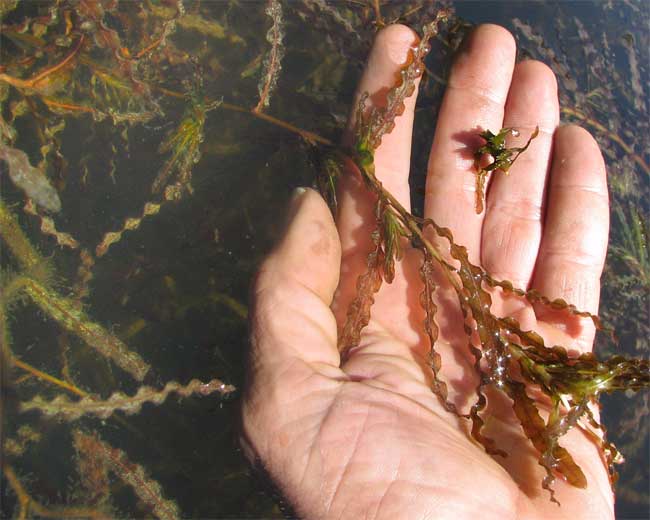
from the the May 24, 2009 Newsletter, issued from the Siskiyou Mountains west of Grants Pass, Oregon:
CURLED PONDWEED
When I arrived here a little over a month ago, in the fairly clear waters of the little pond above my trailer, I saw ribbons of an aquatic plant rising toward the water's surface with distinctive, wavy- margined leaves. Over the weeks I've watched the ribbons rapidly grow longer until now they've reached the water's surface and form a thick tangle of ropy stems just below the surface. You can see some sprigs above.
This is Curled Pondweed, POTAMOGETON CRISPUS. I read that Curled Pondweed rarely propagates with seeds. Mostly it reproduces by stem fragmentation and by the production of hard, burr-like items called "turions." In the last picture a turion lies atop my middle fingers, above the sprig lying across my hand. Basically turions are compacted, hardened stem-tips. A close-up of one can be seen below:
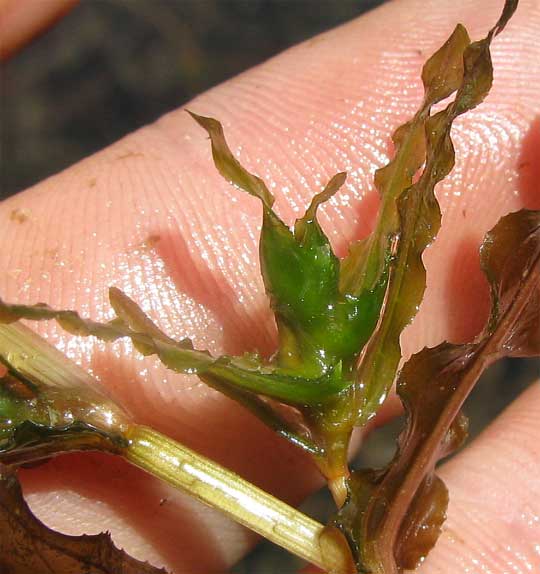
When Curled Pondweeds finish flowering and producing turions in late spring and early summer the plants disintegrate -- rot away -- leaving only fruits and turions. The turions germinate in late summer or fall, the plants overwinter as small plants just a few inches long, even under ice, and then growth continues when the water warms in spring.
Despite many plants producing turions now, currently many plants also are issuing slender, whitish, inch- long flower spikes above the water. A close-up showing a spike with four or five blossoms can be seen below:
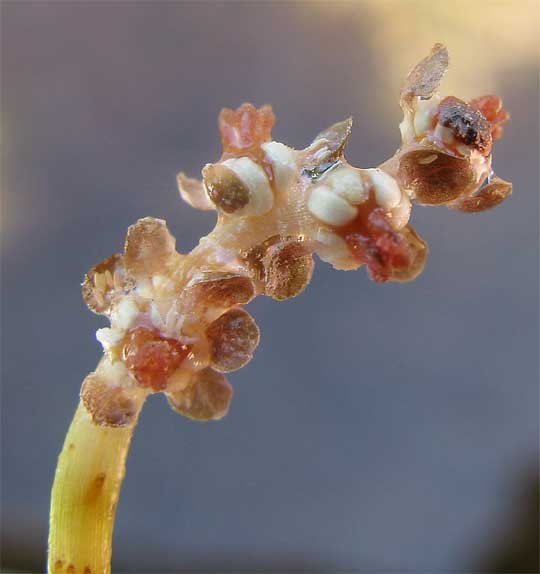 .
.
In that picture each globular mass is a flower. The calyx and corolla, or perianth, have been reduced to one or two brown scales arising beneath each blossom. The whitish objects are anthers filled with pollen. Four two-celled anthers crowd around each ovary, the future fruit, so you can't see the ovary, but the pink styles and stigmas atop the ovaries are clearly visible.
Curled Pondweed is an invasive plant introduced from Eurasia in the mid 1800s and now found all across North America as well as other parts of the world. Often the species causes serious problems clogging waterways. In our pond, however, little fish looking for shelter from big fish love it, and big bullfrog tadpoles can be seen resting suspended in its tangles just below the water's surface.
issued on November 24, 2013 from the valley of the Dry Frio River on the northern border of Uvalde County, Texas:
CURLED PONDWEED IN TEXAS
All year I've been waiting for a certain aquatic plant to produce flowers so I could identify it, but so far I'd seen none. The completely submerged plant's stems grow up to a yard long (1m) and in running water trail downstream. In the Dry Frio's water it's always heavily coated with muddy marl, as seen below next to a fallen tree trunk:
 .
.
Thinking that this late in the season some trace of flower or fruit I'd overlooked might be found, I waded into a mass of them and examined numerous stems before finding exactly what I wanted, and I was surprised. Below, you can see what turned up:
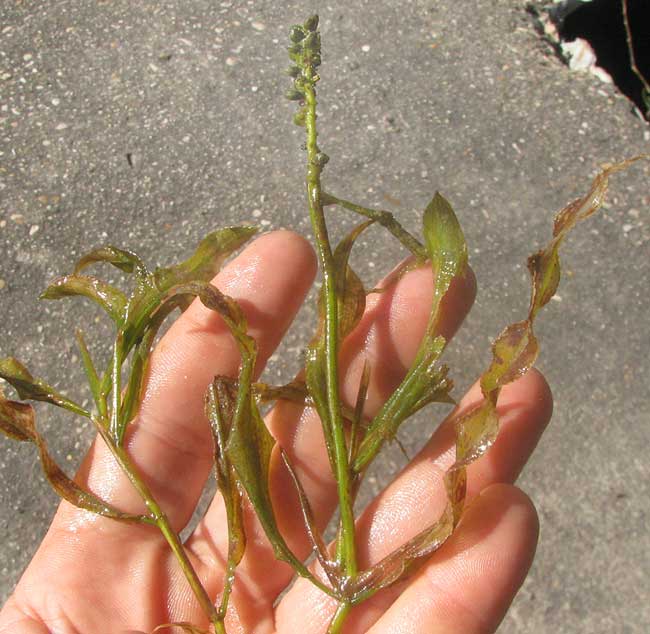 .
.
A spike of flowers and fruits tip the stem. A close-up of the fruiting spike is shown below:
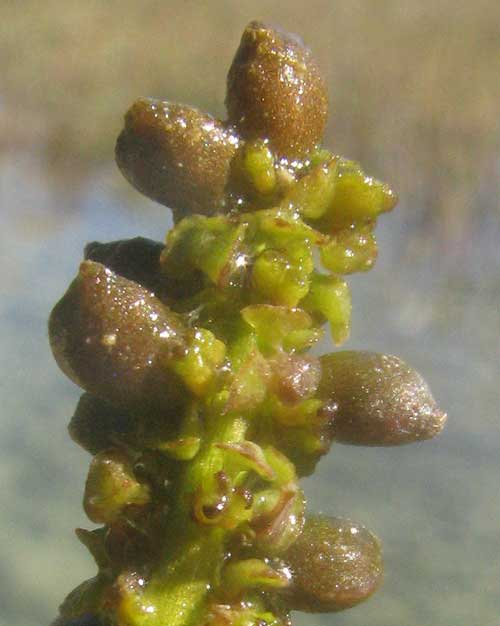 .
.
I've seen this species before, back in southern Oregon's Siskiyou Mountains, but there it grew in clear water and wasn't coated with marl. Apparently our Texas plants are likely to be smothered beneath layers of marl or plain mud, because here people often call Curled Pondweed "Curly Muckweed."
From its occurrence in both Oregon and Texas it's clear that this plant has a large area of distribution. In fact, Curled Pondweed is an invasive from Eurasia, Africa and Australia, but was introduced into the US in the mid 1800s. In the US it appears to be most common in cooler areas such as the Northeast and higher elevations in the West. It's common enough in Texas for Texas A&M to provide a webpage focusing on getting rid of it. There it's written that "Curly-leaf pondweed can be removed by raking or seining it from the pond but will reestablish from any remaining roots." It continues saying that a pond can be fertilized to produce an algal bloom, which prevents the establishment of most bottom-rooted aquatics such as pondweeds.
Curled Pondweed's success as a weed largely rests on its ability to reproduce vegetatively and its capacity to thrive in many kinds of water. It reproduces vegetatively not only with broken stems but also by "turions," which are specialized overwintering buds that survive when the rest of the plant deteriorates. In our pictures you can see that our plant already is falling apart in places.